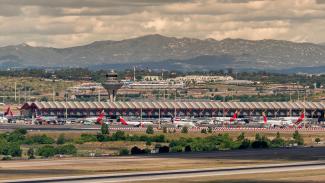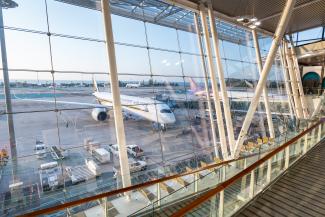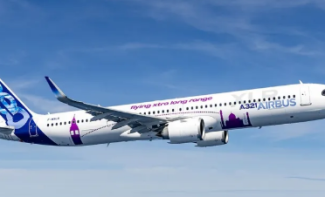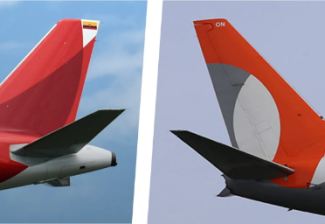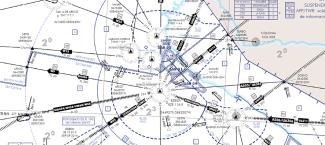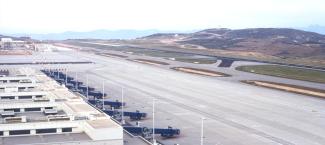The aviation industry in Latin America has experienced rapid growth during the last two decades, especially in the main airports of the region. If this situation persists, it will severely hinder their capacity to efficiently respond to future demand.
Airport Collaborative Decision Making (A-CDM) is a collaborative methodology that promotes real-time operational data sharing to enhance the airport real-time coordination. Thanks to A-CDM, airports increase their situational awareness, which improves decision-making, reduces delays, boosts predictability, and optimizes resource utilization.
A-CDM emerges as a great strategy to optimize the airports’ available resources. While Europe has long benefited from this methodology, Latin America's fast-developing operational landscape demands proven solutions, like A-CDM, to be prepared to be at the forefront of operational improvements.
Understanding A-CDM
A-CDM is a collaborative methodology that relies on the real-time sharing of information by airport operators, airlines, ground handlers, and air traffic control to optimize airport operation.
At its core, A-CDM is structured around defined milestones that represent critical points in the aircraft flow, from flight planning to takeoff. These milestones provide an accurate view of the turnaround status as it is being performed, enabling better coordination, resource allocation, and decision-making.
The milestone approach, according to EUROCONTROL’s A-CDM Manual, consists of 16 milestones:
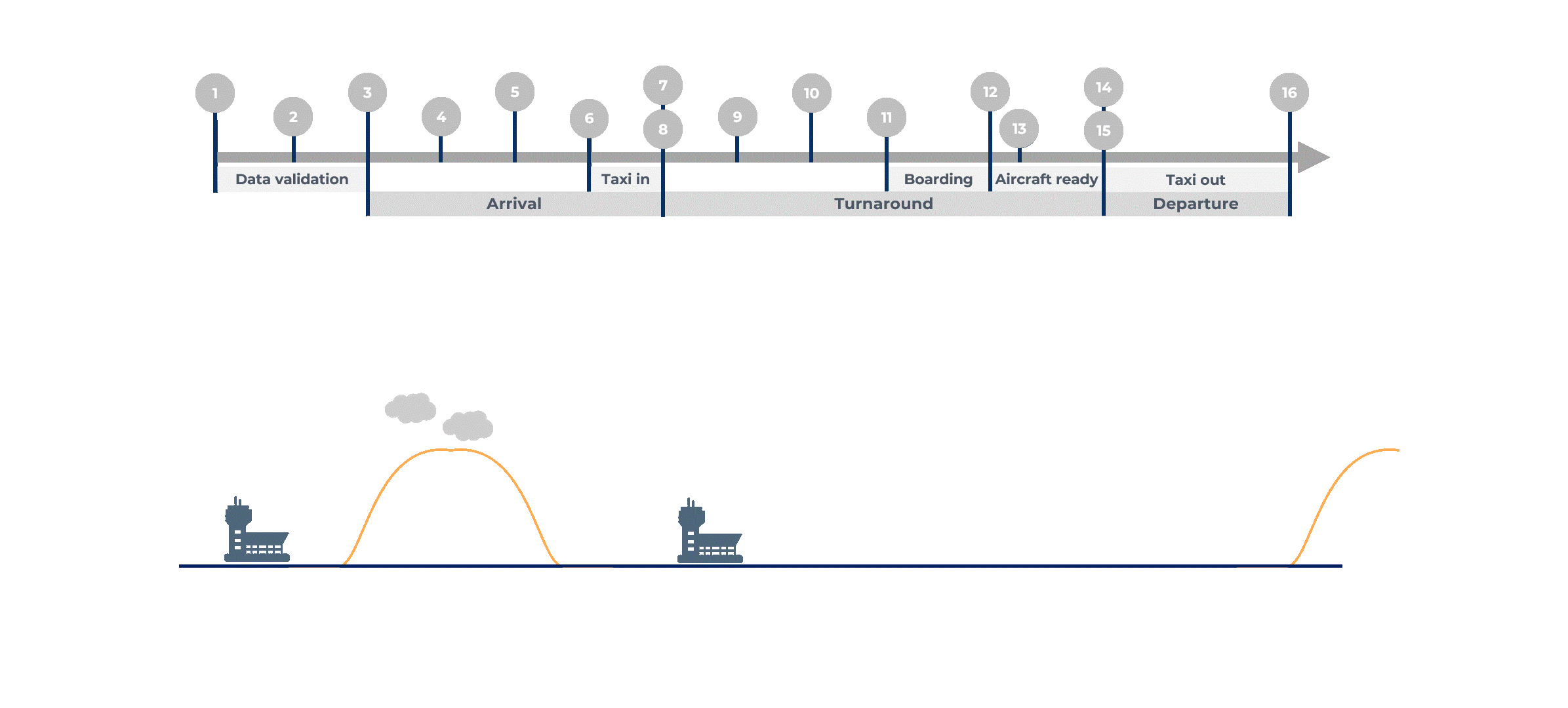
When an aircraft reaches a particular milestone, updated information is shared with all relevant stakeholders, allowing them to adjust their operations accordingly. By standardizing these checkpoints and integrating them into airport systems, A-CDM reduces delays, optimizes the use of airport infrastructure, improves predictability, and, consequently, contributes to environmental sustainability through reduced taxi times and fuel consumption.
The A-CDM methodology introduces 3 new target times that are updated as the milestones are completed. The introduction of these times is a game changer for the operation as the airlines and ground handlers start sharing accurate real-time information and a “best planned, best served” approach is applied to all flights.
- Target Off-Block Time (TOBT): Indicates the time the airline/handler estimates that the aircraft will be ready to leave the parking position. This milestone is kept up to date as the turnaround progresses.
- Target Take-Off Time (TTOT): Indicates the time the aircraft is estimated to take-off from a runway. For congested operations, the TTOT can also be the Calculated Take-Off Time (CTOT).
- Target Start-up Approval Time (TSAT): Indicates the time that an aircraft is estimated to the authorized to leave the parking position. It is dependent of the TOBT and TSAT and is under the responsibility of ATC.
Likewise, A-CDM airports use a Pre-Departure Sequencer (PDS) to seamlessly calculate the best take-off sequence based on the available information. To accomplish this, the system uses Variable Taxi Times (VTT) that are registered for all the possible combinations of stands and runways. The VTTs, along the TOBT, are also part of the calculation of the TTOTs and TSATs.
The origin and consolidation of A-CDM
The concept of A-CDM (Airport Collaborative Decision Making) originated in Europe as a response to the challenges of air traffic congestion caused by the rapid growth in air travel during the 1990s. This surge in traffic led to significant delays and increased operational costs. At the same time, growing concerns about the environmental impact of aviation prompted the development of solutions aimed at optimizing fuel usage and reducing CO₂ emissions — with A-CDM being one of the key initiatives.
According to EUROCONTROL, the implementation of A-CDM at European airports has resulted in a 10% to 20% reduction in taxi-out times. Additionally, A-CDM is estimated to have contributed to up to a 15% reduction in flight delays across Europe.
It is crucial to understand that A-CDM is not a system, it is an operational model aimed at improving collaboration and information among airport stakeholders. Several systems can be adapted to enhance or support such collaboration, however A-CDM outlines bespoke operating procedures, best practices, and information exchange protocols, not just systems.
Progress in Latin America
Several major airports in Latin America have initiated the A-CDM implementation:
- São Paulo (Guarulhos International Airport): Having Latin America’s first fully implemented A CDM, the airport served as a benchmark for future implementations across the region, reinforcing Guarulhos’s role as a regional leader in smart airport operations.
- Bogotá (El Dorado International Airport): Is the second fully operative A-CDM in Latin America. The systems used include a pre-departure sequencer (PDS), aiming to provide an intuitive interface for air traffic controllers to manage departure traffic, resulting in a reduction of taxi times and emissions.
o ALG has partnered with El Dorado International Airport during all the phases of the project, which resulted in a successful implementation - Lima (Jorge Chávez International Airport): Is currently transforming its operation with a new runway and terminal building and has completed the development of the A-CDM model. Soon, the A-CDM will level up the airport’s operational performance, environmental sustainability, and passenger experience.
o So far, ALG has collaborated with Jorge Chávez International Airport in the initial assessment and the development of the Concepts of Operation - Mexico City (Benito Juárez International Airport): Has engaged in A-CDM-related projects in the past, including the commissioning of a new Airport Operations Control Center (AOCC) to enhance operational efficiency amid capacity constraints.
These initiatives reflect a growing recognition of A-CDM's potential benefits in the region boosted by its main hubs.
Strategic priorities for A-CDM Implementation
When implementing operational models in new airports, it is important to understand their uniqueness and operational reality to guarantee that the new model is not only adapted to the airport but has the buy-in of the aviation community.
- Operational characteristics: The implementation of the model needs to consider the current status of the airport regarding systems, processes, and people and must be sustained by a comprehensive gap assessment. There may be certain particularities that require the implementation of a bespoke approach (e.g. if certain systems, like electronic flight strips are not available, some milestones like the Actual Start-up Approval Time (ASAT) may not be registered and the accuracy of Actual Start-up Request Time (ASRT) needs to be measured using the Actual Off-Block Time (AOBT).
- Stakeholder engagement: Effective A-CDM requires active participation and information sharing among all stakeholders, which can be hindered by varying levels of commitment and resource availability. Training and workshops should be properly scheduled and prepared to guarantee all the stakeholders are engaged in the methodology; otherwise, A-CDM initiatives will not succeed.
- Technological capabilities: Implementing A-CDM demands investing in technology beyond the A-CDM system, including updates in the Operational Databases (ODB) and integrations between the airports and the main stakeholders. This system enhancement must be carefully planned in advance as the main goal should always be a high-quality digitalized environment that shares data in real-time.
Key findings and recommendations
The A-CDM model is well known in Europe and is starting to become a reality in Latin America. EUROCONTROL’s airport CDM implementation manual is being used extensively as a guide for implementation. However, there are other factors that, according to ALG experience, are key considerations that can secure the success of A-CDM implementations:
- The analysis phase is critical, as it identifies the feasibility of the implementation and establishes the foundations for the involvement of the stakeholders. Likewise, the initial assessment can anticipate and mitigate future challenges.
- All the main stakeholders in the airports must be involved in the development and implementation from the earliest stage, and they must be willing to collaborate and share information. The key of A-CDM is setting up a collaborative environment where everyone is actively participating. It is highly recommended to sign a Memorandum of Understanding with the aviation community.
- The operational performance must be monitored regularly, and, if possible, before the A-CDM has been implemented. This monitoring will provide key information about where the airport is before A-CDM is live and set quantifiable expectations and targets for future operation. Additionally, it will be critical to create a continuous improvement culture.
- Keep the momentum: engagement with all stakeholders is the utmost priority. The success of the A-CDM relies on the stakeholders’ commitment to make it happen; therefore, they must be constantly involved as the project progresses. This can also imply an adaptation of the A-CDM procedures on the go, so that they suit the entire airport’s environment.
The path forward
Latin American aviation is facing an unprecedented scenario; thus, it is critical to implement tested solutions and effective best practices from other regions:
- Continuous improvement: By building on initial successes and fostering a culture of continuous improvement, Latin American airports are positioning themselves to meet growing demand with smarter, more resilient operations. This implies setting KPIs and targets, to later revise them and decide the best strategy to improve collaboration among stakeholders.
- Capacity building: Investing in training and resources to ensure all stakeholders can effectively participate in the A-CDM process. Although A-CDM is a methodology and not an IT system, disposing of adequate support tools will foster the stakeholders’ engagement and will ease the collaboration among them.
- Regional collaboration: Encouraging cooperation among airports, airlines, and air navigation service providers to share best practices and lessons learned. Similarly, establishing regional support structures in Latin America, such as EUROCONTROL in Europe, could help set unified regional standards, enhancing aviation safety, operational efficiency, and the overall passenger experience.
Conclusion
The recent implementation of A-CDM at El Dorado International Airport marks a significant milestone in advancing air traffic efficiency and coordination. This achievement not only enhances operational performance at one of the region's busiest hubs but also sets a powerful standard for the modernization of major airports across Latin America.
With Jorge Chavez International Airport presumably being the next airport in Latin America to operate under an A-CDM approach, both airports will pave the way for a broader regional adoption of A-CDM, shaping the future of aviation in Latin America.









